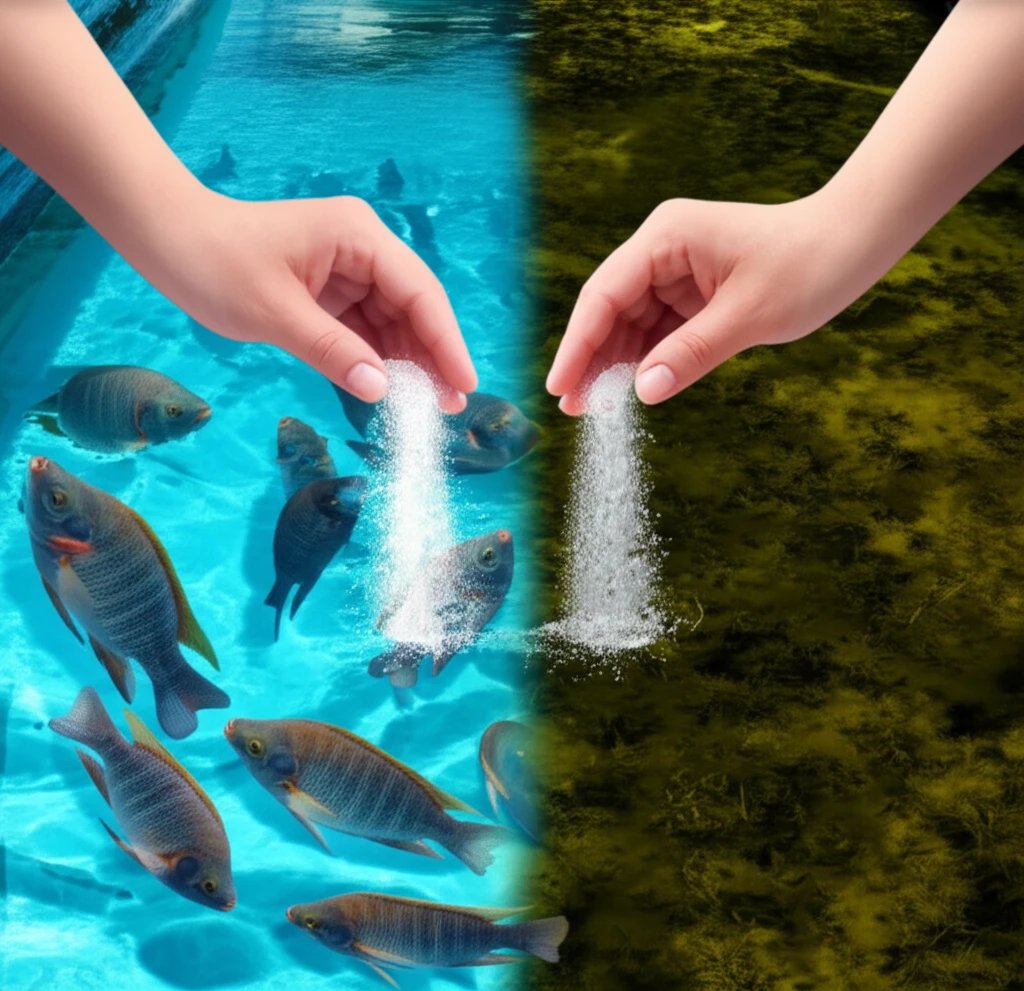
Is Liming Your Fish Pond a Waste? What You Need to Know About Water Alkalinity
"Uncover the truth about using sodium carbonate (Na2CO3) in Nile tilapia farming and whether it actually boosts fish growth. Hint: it might depend on your water's current state."
For fish farmers, maintaining optimal water quality is crucial for healthy fish and good growth. You probably know the basics: keep an eye on dissolved oxygen, pH, and ammonia levels. But what about alkalinity and hardness? These two often get less attention, yet they're key indicators of water quality.
Alkalinity acts as a pH buffer, preventing drastic swings that can stress or even kill your fish. Hardness, on the other hand, refers to the concentration of minerals like calcium and magnesium, essential for various biological functions in fish. Liming, the addition of alkaline substances, is a common practice to improve these parameters, but is it always effective?
A recent study investigated the impact of liming with sodium carbonate (Na2CO3) on Nile tilapia, a popular aquaculture species. The goal was to determine if this type of liming improved water quality and ultimately boosted fish growth. Here's what they found and what it means for your fish farming practices.
The Liming Experiment: Na2CO3 and Nile Tilapia

Researchers at the Universidade Federal do Ceará in Brazil conducted a six-week experiment with Nile tilapia fingerlings. They wanted to see how adding sodium carbonate (Na2CO3) to the water affected both water quality and the growth of the fish.
- No treatment (the control group)
- Acidification with hydrochloric acid (HCl)
- Liming with sodium carbonate (Na2CO3)
The Verdict: When Does Liming Actually Work?
So, what did the study reveal? The key finding was that liming with Na2CO3 didn't significantly improve tilapia growth when the initial total alkalinity of the water was already above 20 mg CaCO3/L. In other words, if your water already has a decent buffering capacity, adding more alkalinity through liming might not give you any extra benefit.
The researchers also observed that in green water aquariums, total ammonia, calcium hardness, pH, and total alkalinity were all higher compared to clear water aquariums. This highlights the complex interactions within pond ecosystems and how algae can influence water chemistry.
The study suggests that before you start liming your fish pond with Na2CO3, it's crucial to test your water's total alkalinity. If it's already above 20 mg CaCO3/L, you might be better off focusing on other aspects of water quality management, such as maintaining proper oxygen levels and controlling ammonia buildup. Sometimes, less is more!
